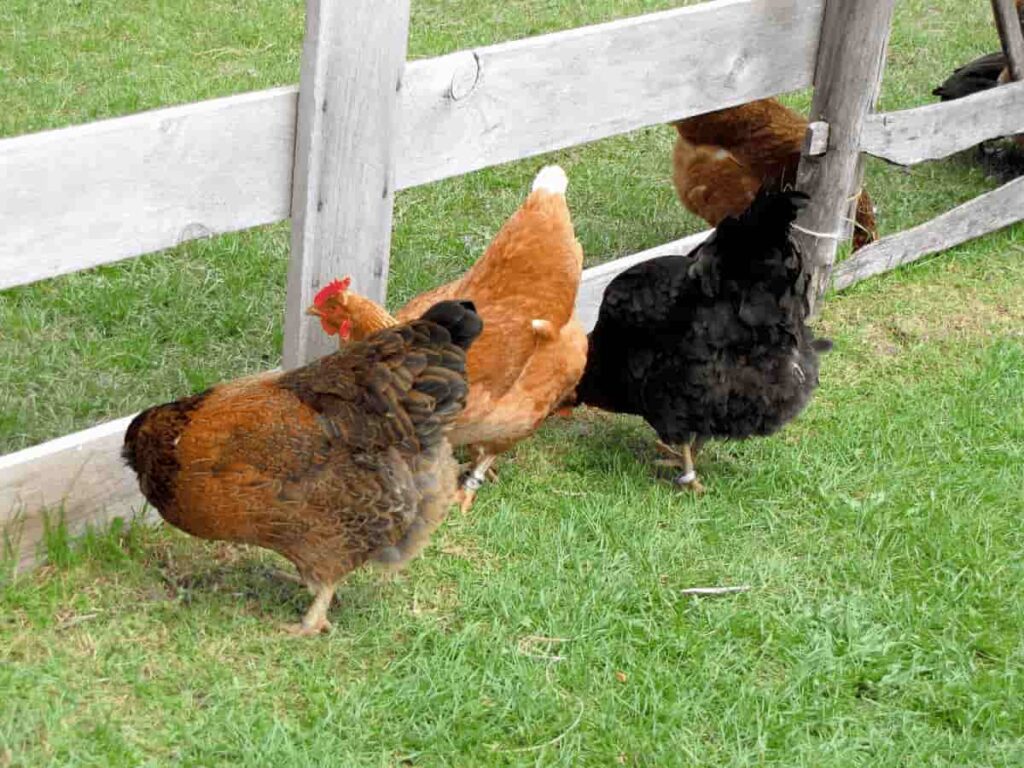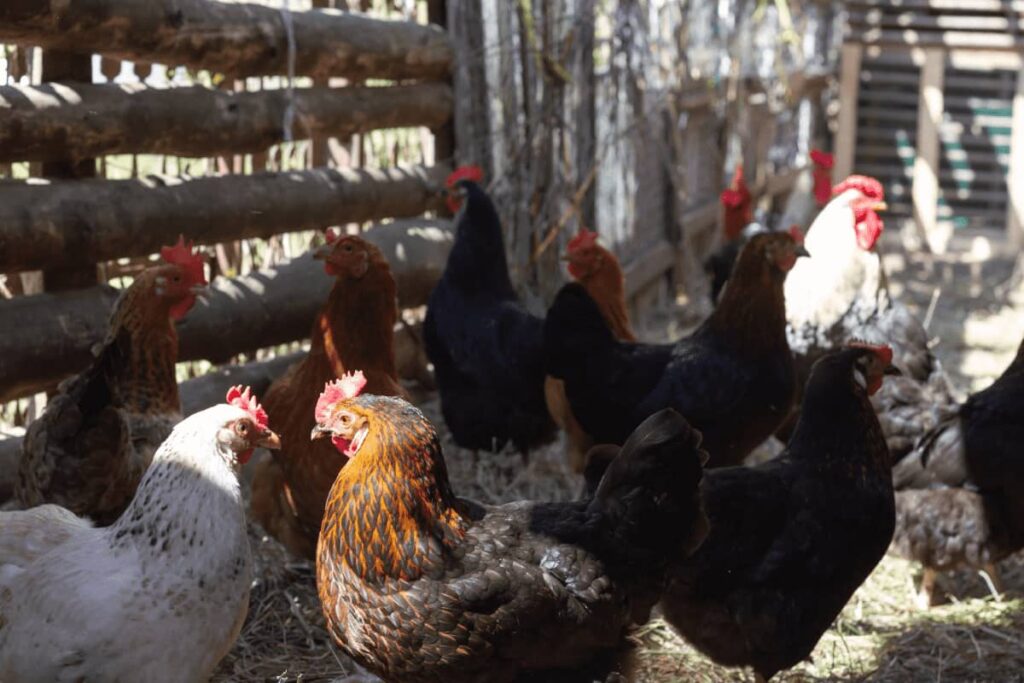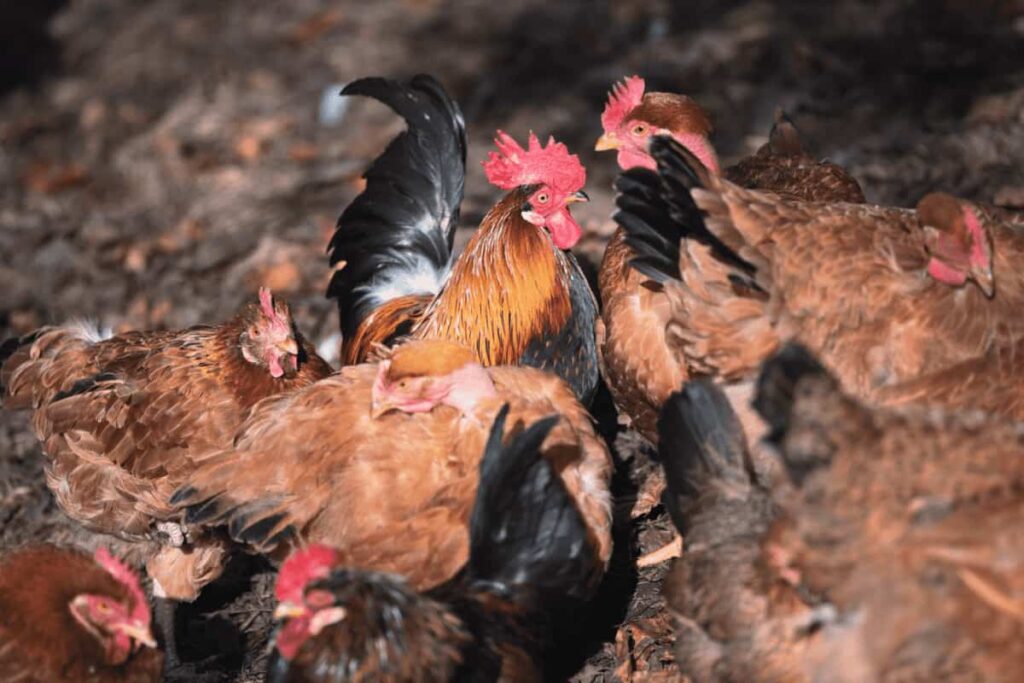In the bustling backyards of India, a new contender is rising in popularity among poultry breeds, known for its remarkable profitability and resilience: the Kaveri chicken. This breed has swiftly gained favor among small-scale farmers and backyard poultry enthusiasts due to its impressive characteristics, including high egg production rates, rapid growth, efficient feed conversion, and commendable disease resistance.

The Kaveri chicken, with its adaptability to the Indian climate and low maintenance requirements, is proving to be a game-changer in backyard poultry, offering a sustainable and profitable option for those looking to augment their income through poultry farming.
Kaveri Chicken
Introduction to the Kaveri Chicken Breed
The Kaveri chicken breed, named after the revered river in South India, is a testament to selective breeding aimed at enhancing profitability and sustainability in small-scale poultry farming. This breed stands out due to its robustness and ability to thrive in India’s diverse and often challenging climatic conditions.
Its growing popularity is not just a result of its physical attributes but also its ability to fit seamlessly into the backyard poultry model, which is an integral part of rural Indian livelihoods. With its dual-purpose utility for eggs and meat, the Kaveri chicken offers a versatile option for farmers looking to maximize their backyard’s potential.
Characteristics Favoring Profitability
The Kaveri chicken breed brings a suite of characteristics that heavily tilt the scales in favor of profitability for small-scale and backyard poultry farmers. These chickens are hardy and adaptable, thriving in various environmental conditions across India, from the humid tropics to the dryer regions.
Their calm temperament makes them ideal for close quarters, allowing for higher stocking densities without significant stress-related issues. Additionally, their plumage and body structure provides them with natural resilience to common poultry ailments, enhancing their appeal to those looking for low-maintenance poultry options.
High Egg Production Rates
One of the most compelling reasons for the popularity of Kaveri chicken is its high egg production rates, with individual hens capable of laying around 200-250 eggs per year. This prolific output places the Kaveri chicken among the top choices for backyard farmers, focusing on egg production for income. The eggs are sizable and high-quality, commanding favorable prices in nearby markets and offering a reliable income stream for households. This high yield and the breed’s other favorable traits make it an attractive option for those looking to invest in poultry farming.
Rapid Growth and Efficient Feed Conversion
The Kaveri chicken’s rapid growth rate contributes to its profitability. These birds reach market weight quicker than many traditional breeds, making them a cost-effective choice for meat production. Their efficient feed conversion rate means that they require less feed to reach their optimal weight, reducing the overhead costs for farmers. This efficiency in converting feed into body mass shortens the time to market, making it a lucrative option for meat producers, and aligns with the sustainable farming practices that are becoming increasingly important in today’s agricultural landscape.
Disease Resistance and Adaptability
The resilience of the Kaveri chicken to common poultry diseases is a significant boon for farmers, particularly those in regions where access to veterinary services and pharmaceuticals may be limited. This breed’s natural resistance to ailments commonly afflict poultry reduces the need for interventions, lowering the cost and labor associated with disease management.
In case you missed it: How to Raise Frizzle Chickens: A Comprehensive Guide for Beginners

Moreover, the Kaveri chicken’s ability to thrive in diverse Indian climates minimizes environmental pressures that may cause health problems in less adaptable breeds. This promotes a healthier poultry population and consequently, enhances financial stability for farmers.
Cost-Effectiveness in Backyard Settings
The Kaveri chicken’s journey to becoming a staple in Indian backyards is significantly attributed to its cost-effectiveness. This breed’s adaptability to varied backyard settings and its ability to thrive on locally available feed make it an economical choice for small-scale farmers and households.
The Kaveri chicken can consume a diverse diet ranging from kitchen scraps to natural forage, reducing the reliance on commercial feeds that can be costly. This inherent trait of efficiently converting available resources into valuable protein, be it eggs or meat, presents an attractive proposition for those looking to optimize their backyard’s output without incurring substantial expenses, thereby enhancing the overall profitability of small-scale poultry endeavors.
Market Demand and Premium Pricing
The rising market demand for Kaveri chicken products is a testament to the breed’s growing popularity and the quality it offers. Consumers increasingly seek healthier, locally sourced poultry options, and Kaveri chicken fits this niche perfectly. The eggs and meat from Kaveri chickens are often considered premium products, owing to their perceived health benefits and superior taste, which stems from the birds’ natural diet and free-ranging lifestyle.
This consumer preference has enabled farmers to command higher prices for Kaveri chicken products, significantly boosting their income potential. The ability to meet this market demand with a high-quality product ensures a steady revenue stream for small-scale farmers and reinforces the economic viability of raising Kaveri chickens in backyard settings.
Minimal Maintenance Requirements
One of the most appealing aspects of the Kaveri chicken is its minimal maintenance requirements, making it an ideal choice for backyard poultry keepers who might not have extensive resources or time to dedicate to poultry care. These birds are known for their hardiness and ability to fend for themselves greatly, requiring less hands-on care than more delicate breeds.
The reduced need for specialized housing and their disease resistance translates to lower upkeep costs and less labor-intensive care routines. This ease of maintenance not only makes the Kaveri chicken an accessible option for novice poultry keepers but also contributes to its profitability by keeping operational costs low.
Sustainable Breeding Practices
Sustainable breeding practices play a crucial role in the Kaveri chicken’s success story, ensuring the breed’s longevity and continuous improvement. These practices focus on preserving genetic diversity, enhancing desirable traits such as disease resistance and feed efficiency, and ensuring the welfare of the birds.
In case you missed it: Raising Ancona Chickens: A Complete Guide to Care, Breeding, and Benefits

By adopting sustainable breeding methods, farmers contribute to the breed’s resilience and adaptability, ensuring that Kaveri chickens remain a viable and profitable option for generations to come. Moreover, these environmentally friendly practices align with the growing global emphasis on sustainable agriculture, making Kaveri chickens a profitable choice and a responsible one in the context of modern farming challenges.
Conclusion
The Kaveri chicken is fast becoming a cornerstone of profitable poultry farming in Indian backyards, thanks to its high egg production, rapid growth, and remarkable resilience to disease and environmental conditions. Its adaptability and low maintenance make it an ideal choice for small-scale farmers looking to maximize their yield with minimal investment.
As more farmers adopt this breed, the Kaveri chicken is set to play a significant role in the sustainability and profitability of backyard poultry farming in India, offering a dependable source of income while promoting food security and rural livelihoods.
- Irrigation and Water Management in Pineapple Farming
- Blossom to Harvest: Mastering Flowering and Pollination in Papaya Farming
- Pig Fattening Essentials: From Selection to Sale for Beginners
- Raising Wagyu Cattle: A Complete Guide for Premium Beef Production
- Soil Types and Their Water Holding Capacity
- Optimizing Irrigation Schedules for Coconut Groves for Enhanced Yield
- Espresso Your Garden: Coffee Grounds for Healthier Acid-Loving Plants
- The Best Soil Mix for Snake Plants: How to Mix Your Own Snake Plant Soil
- Green Thumb Success: Expert Tips for Cultivating Greenhouse Beans All Year Round
